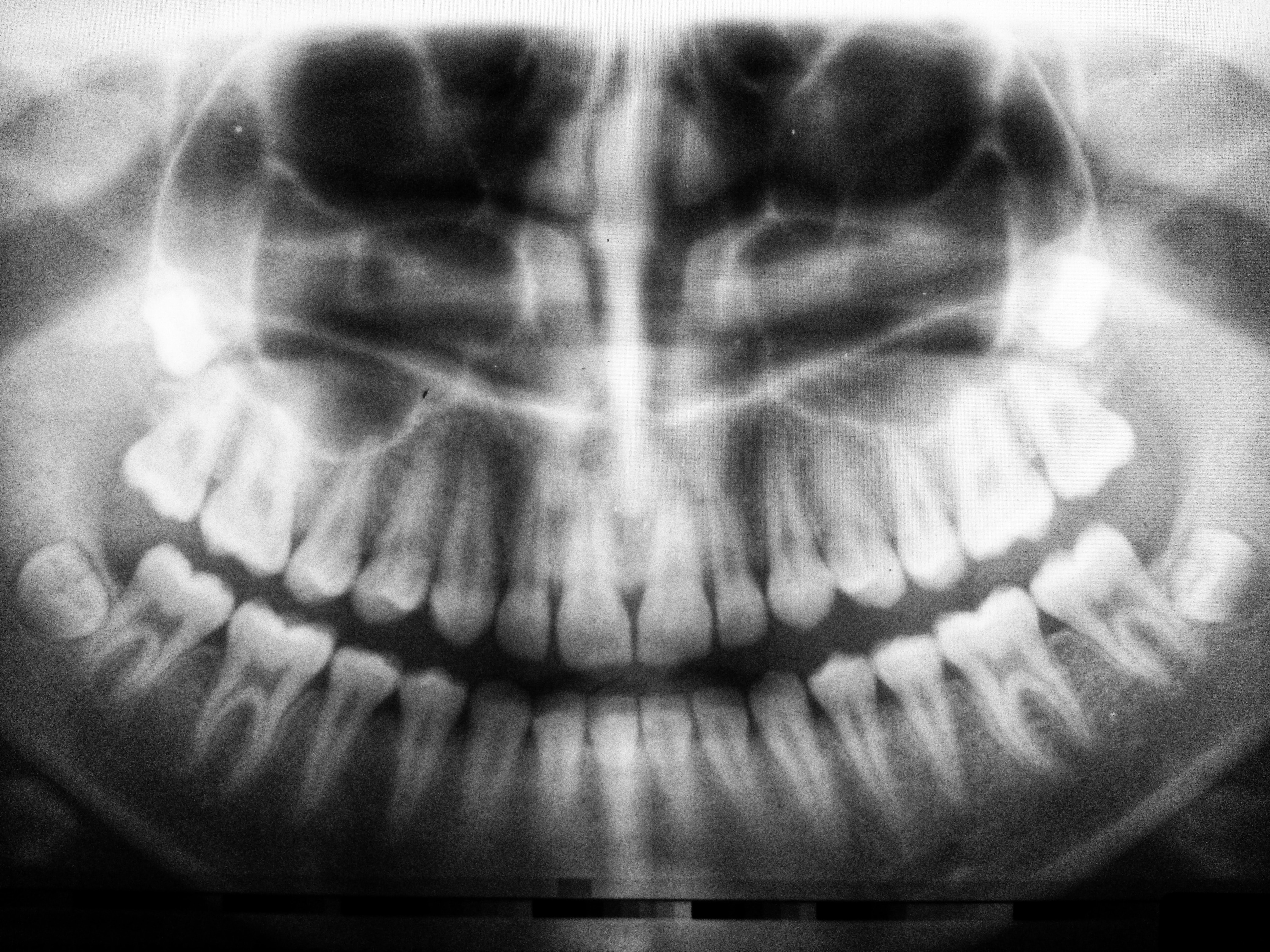#1 Listen to the Floss Boss
Your dental hygienist is your Floss Boss. If she is nagging you about flossing more, it is time to start paying attention. The cavity-prone areas between your teeth are not accessible to a toothbrush or the mouth’s natural cleansing mechanisms. Flossing is the only good way to prevent decay in these spots. More importantly, flossing is critical to gum health. Periodontal (gum) disease is so common and so harmful to your overall health that the Cleveland Clinic has listed flossing as one of 5 daily activities most essential to wellness.
#2 Don’t Wait Until It Hurts
If you wait until it hurts to seek treatment, you are too late. Afflictions like tooth decay, periodontitis, and oral cancer generally do not cause pain until they enter the most severe stages of the disease. A tooth with a cavity, for instance, will not start to ache until the decay has reached the pulp, the deepest part of the tooth. If caught early, most cavities usually can be treated with a small filling. However, once a toothache begins, a root canal and crown will often be necessary to save the tooth. Sometimes the tooth cannot be saved at all. A key to avoiding a lot of extensive dental work is to follow up on recommendations from your dentist before little problems become big ones. Don’t procrastinate!
#3 Steer Clear of Smoke… and Smokeless
All forms of tobacco have devastating effects on the mouth. Smoking has such a strong correlation with periodontal (gum) disease that the majority of smokers will eventually suffer a deterioration of jaw bone and subsequent tooth loss. A study by the Academy of General Dentistry demonstrated that pack-a-day smokers lost an average of 3 teeth after 10 years of cigarette use. Smoking also causes bad breath, breakdown of dental work, and tooth stain. Both smoking and the use of smokeless tobacco drastically increase your risk for debilitating and lethal oral cancers. Trying to quit is terribly difficult, but don’t be afraid to ask your dentist or doctor for help.

#4 Don’t Always Follow the Plan
It seems obvious that dental treatments should be based on recommendations that ensure oral health, but patients and dentists alike often get themselves in trouble by allowing a dental insurance plan to dictate treatment. If you are lucky enough to have dental insurance, it is a great benefit that will help pay for preventative treatment and some minor procedures. It may even pay for a portion of more extensive work up to a yearly maximum. However, dental insurance is not typical insurance where you pay a significant deductible and then they cover the catastrophic loss. Instead, they pay the limited upfront dollars and you pay when things start getting really expensive. Unlike homeowners insurance, which pools money to cover an unlikely event like a house fire, dental benefits cover routine occurrences like cleanings, x-rays, and fillings. Plans are not meant to be comprehensive and coverage often excludes common treatments and ailments. These exclusions are usually not based on necessity or value as with medical insurance but negotiated and determined by contract costs. The bottom line is dental insurance is fantastic, but don’t base your dental care decisions only on what insurance pays. Do what’s best for you, and you will pay a lot less in the end.
#5 Watch Out for Acidic Foods & Drinks
Every day your teeth are attacked by acid. If these attacks get out of hand, the enamel on your teeth is weakened and decay will begin. The sugars in the food we eat mix with the bacteria in our mouth to produce acid. In addition to brushing and flossing, your saliva washes away and neutralizes the acid over time. However, if you are constantly sipping a sports drink or nibbling on candy, your mouth can not keep up. When eating sweets, the key is not spreading consumption over a long period of time. Many foods like citrus fruits and sodas are not just sugary, but also inherently acidic. Certain health conditions like acidic reflux and bulimia will also cause rapid enamel erosion if left untreated.
#6 Bite Right
When you close your mouth, your teeth are meant to come together in a very specific way that is supportive and stable. When upper and lower teeth don’t align correctly the result will lead to something called occlusal disease, which is one of the most undiagnosed ailments that exist today. The signs and symptoms of occlusal disease include:
-
- Pain, popping and clicking in the TMJs (jaw joints)
-
- Headaches
-
- Tooth wear
-
- Loose or shifting teeth
-
- Sensitive teeth
-
- Grinding or clenching
Left untreated a bad bite will lead to deterioration of the teeth and joints. Occlusal disease is treated by reshaping, restoring, or repositioning teeth to gain balance and harmony. This can be done with minor adjustments, crowns, or braces (orthodontics). Occlusal disease can also be managed with bite splints and night guards made by your dentist that protect the teeth and joints.
#7 Don’t Be Bad to the Bone
Osteoporosis is a serious concern, and thus many Americans are treated with bisphosphonates, a class of drugs that prevent the loss of bone mass. Fosamax, Boniva, Reclast, and Actonel are common examples of these medications. While these drugs are very appropriate in severe cases, too often serious side effects that involve oral health are ignored. Bisphosphonates can inhibit proper healing of the jaw bone and lead to a higher risk of BRONJ (bisphosphonate-related osteonecrosis of the jaw). BRONJ is a devastating condition where the jaw bone is unable to heal and essentially dies off. This process can occur after routine dental procedures like extractions, gum treatments, and root canals. It can also result from sore spots caused by dentures.
The risk of BRONJ remains long after the medication is stopped. The problem is that most patients will experience dental issues that require treatment at some point. Bisphosphonates should be used only as a last resort after other bone health strategies like nutrition and exercise have been exhausted. If you are considering medication for osteoporosis or osteopenia, check with your dentist to ensure that your teeth are in optimum health and all potential issues are treated. Most importantly, let your dentist know if you have ever taken a bisphosphonate. Every case is different, so it is important that you check with your own doctors before making any changes to your meds.
#8 Don’t Dodge the Dentist
Time, money, and anxiety are all common reasons for patients to avoid routine dental visits. However, regular preventative visits are relatively quick, inexpensive, and noninvasive when compared to emergency treatment, surgeries, and restorative work. Even if you don’t have dental insurance, it is much cheaper to pay out of pocket for preventive measures and minor treatments than it is to wait for benefits and face expensive procedures whose costs exceed plan maximums.
#9 Value the Tooth
Patients are often shocked at the cost to fix or replace a tooth. Most dentists understand that they are not just treating teeth, but helping people who face budget constraints and have to prioritize needs. However, dentists can make recommendations in their patients’ best interests because they also understand the value of a tooth. Even the loss of a single tooth can start a domino effect of shifting and deterioration as the remaining teeth start to carry a greater burden. Important lifestyle activities like eating, smiling, kissing, and tasting are not that same with dentures. In addition, studies confirm that teeth are the single most significant attribute not only in attracting the opposite sex but also in making a good professional impression. When making a difficult decision about treatment, remember that good dentistry isn’t cheap, but it’s cheaper than bad dentistry.
#10 Avoid Toothbrush Aggression

Please don’t take your frustrations out on your teeth. If you are brushing your teeth like you are scrubbing your sidewalks, you are brushing too hard. Overzealous scouring with your toothbrush will lead to gum recession and wear on tooth surfaces and roots. Take your time and brush gently three times a day for the best results. Never use anything but a soft toothbrush. Also, check with your dentist that the toothpaste you are using does not contain any harsh abrasives. Electric toothbrushes that use sonic vibrations are ideal because they are most effective in removing build-up while still being kind to your mouth.
#11 Play Good Defense
Oral cancer has alarming morbidity and mortality rates, and it is one of the few cancers that are on the rise in our country. Of particular concern is the rise in cases among young nonsmokers. The increase is largely attributed to the Human Papillomavirus (HPV), a sexually transmitted disease that is carried by over half of the US population. HPV is most notoriously known as a cause of genital warts and cervical cancer, but it is also a risk factor for oral cancer. New vaccines that prevent certain dangerous strains of HPV are now available. Gardasil is an example. It is now common for females to be inoculated between the ages of 9 and 26, but most males are still not getting the vaccine. Parents can struggle to take action against a threat that seems so distant, but please defend your kids against oral cancer by protecting both your sons and daughters.
#12 Never Fear the Fluoride
In the late 1940s, many communities began fluoridating their water supplies to bring levels to concentrations ideal for dental health, and ever since, fluoride conspiracy theories have been rampant. Initially, activists asserted that fluoridation was part of a far-reaching plot to impose a socialist or communist regime. Stanley Kubrick‘s 1964 film Dr. Strangelove, mocked this paranoia as character General Jack D. Ripper initiates a nuclear war in the hope of thwarting a communist plot to “sap and impurify” the “precious bodily fluids” of the American people with fluoridated water.
Today fear and opposition still arise from moral, ethical, political, and safety concerns. Many who oppose water fluoridation consider it to be a form of compulsory mass medication. Advocates, on the other hand, point to research that has shown at least a 50 percent reduction in tooth decay in children and tooth loss in adults attributed to fluoridation. The Centers for Disease Control and Prevention has recognized water fluoridation as one of the 10 great public health achievements of the 20th century. Some countries are in fact reducing the amount of fluoride or even eliminating fluoride in water and instead supplementing through things like table salt and baby formula. Fluoride in water or food is “systemic” fluoride that is essential to childhood tooth development as it is incorporated into the crystals that form enamel, the hard outer layer of our teeth. Ask your dentist about the appropriate level of fluoride for you and your kids.
While arguments against systemic fluoride still exist, “topical” fluoride treatment for adults and children has achieved near-universal acceptance. During common periods of “acid attack,” the enamel starts to break down and release minerals. Fluoride can mitigate this process before decay occurs. It can even remineralize small areas of decay. The most common source for topical fluoride is toothpaste. Another source includes new varnishes applied at the dental office. These varnishes are a very cost-effective way to reduce decay and avoid expensive dental work. Next time you are at the dentist, make sure you say yes to fluoride.
#13 Use a Bottle Opener
Removing bottle caps with your teeth is very manly, but if you are trying to impress somebody, it’s best to stick with a nice smile. Instead of pulling sewing needles with your teeth, buy a thimble. And if you need a nervous habit try tapping your foot instead of chewing on your nails. Your dentition is best left to work on food. Abusive habits can result in broken dental work and chipped or fractured teeth.
#14 Obey the X-ray

Dental x-rays are a win-win. Dentists like them because they are powerful diagnostic tools that show areas that can be seen when examining the mouth. X-rays are also great for patients because they catch problems early by screening for decay, gum disease, cancers, and other pathology of the teeth and bone. Many concerns about x-rays are unfounded. The new digital x-rays used at most dental offices use almost insignificant amounts of radiation. For example, a single tooth x-ray exposes you to the same amount of radiation as two bananas. Yes, that’s right! Dental radiograph vs. fruit: same amount of radiation. To further illustrate the point, a panoramic x-ray that shows all the teeth and jaw bone and is usually taken every 3 to 5 years has the exposure equivalent of a daily dose of natural background radiation.
X-rays are usually covered by dental insurance, but even when they are paid for out of pocket they are huge cost savers. An x-ray that runs around $25 can find a cavity that costs $125 to fix with a filling. Left undiagnosed for six short months, that same cavity could require a root canal and crown to fix at a cost of over $2000.
#15 Coddle the Connection
The connection between oral health and systemic health is well documented. For instance, it is established that periodontal disease is a risk factor for many serious conditions. To completely understand wellness, however, it must be realized that the link works both ways. Diabetes, poor nutrition, and even sleep apnea are just a few examples of medical concerns that contribute to oral disease.
For more information on these and other important oral health topics, check out our blog!





